
Growing the Family Tree
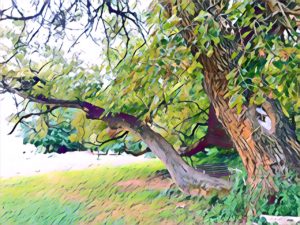
A family tree offers a window into your family’s past, and like a real-world organic tree, it requires constant pruning, maintenance and care. As your family tree grows, you’ll uncover family stories, photographs and vital records along the way which provide insights into who your ancestors were, what they did in their lives, when they did these things in their lives, where they lived their lives, and if you’re lucky, you might also discover why they did the things they did, and how they did these things. Now everyone has their own approach to building their family tree, so I will only describe the methodology that I follow and have followed thus far for growing my family tree.
First, to stay motivated in your quest to grow your family tree, I believe you need to have the proper mindset and understand that you will probably not complete the task to your satisfaction in your lifetime, but, you will enjoy the journey along the way…so, think of yourself as an investigator…a Historical Investigator. Like any project, to see the fruits of your labor, or outputs…you need good inputs. So, below I’ve broken down the various steps I have used to grow my family tree, and list the inputs and desired outputs for each step.
Family Sources
Take advantage of having your family around and mine them for information about your immediate family, grandparents, and whatever information they have on their ancestors. Time is of the essence as the recollection of memories fade with each passing day.
- Inputs
- Interviews
- FamilyTreeMagazine.com: 20 Questions
- ThoughtCo.com: Fifty Questions for Family History
- Deseret.com: Genealogy 150 Questions to Ask Family Members About Their Lives
- FamilyHistoryDaily.com: Family History Interview Questions
- Artifacts: Photos, Mementos, Heirlooms
- Who: Who is in the photograph? Who did the memento belong to? Who did the heirloom belong to?
- What: What is happening in the photograph? What is the memento about (describe)? What is the heirloom (describe)?
- When: When was the photograph taken? When was the memento made? When was the heirloom made?
- Where: Where was the photograph taken? Where was the memento made? Where was the heirloom made?
- Why: Why was the photograph taken? Why was the memento made/bought? Why was the heirloom made/bought?
- How: How was the photograph taken? How was the memento made/bought? How was the heirloom made/bought?
- Interviews
- Outputs: From the inputs described above, gather your notes and you’ll start growing your family tree with some family stories, photos and other artifacts to supplement the tree along with how these facts intersect with historical eras, events and culture of the time.
- Ancestor Names, Birth Dates, Death Dates, Marriage Dates, School Attendance Dates
- Family Stories about photos, mementos and heirlooms
- Clues to your family history from interviews
- Basic Family Tree that maybe goes back three generations
DNA
As you delve deeper into the past you’ll most likely subscribe to a genealogy website community like Ancestry.com and in growing your family tree on genealogy websites with large communities like these, you’ll encounter lots of dubious information submitted by other people. So, getting your DNA test and then comparing your family tree with trees from others with matching DNA helps identify common ancestors and validate your tree information.
- Inputs: DNA tests, read about The Three Main Types of DNA Testing, below are links to two of the DNA tests I have taken:
- Ancestry DNA: Ancestry DNA Kit
- 23andMe DNA: 23andMe DNA Kit
- Outputs:
- Ancestry DNA: See Ancestry DNA Results, for more details on the reports you’ll receive
- 23andMe DNA: See DNA Testing for Ancestry, Traits, and Health, for more details on the reports you’ll receive.
Genealogy Websites
Gathering primary source information from your family will only get you so far in your research. Eventually, you’ll need to leverage the power of social networks, and in genealogy, these take the form of genealogy portals and genealogy subscription websites. The genealogy portals and subscription websites crowd source the millions of user trees in their networks to create ancestor hints across your family tree.
- Inputs: Leverage the family trees on these websites to build your own tree, and validate these new tree connections by matching your results with those of your DNA matches.
- Outputs: By leveraging information from other family trees, you’ll grow your own family tree deeper into the past and over time you should have a tree that goes back about ten generations, if you’re lucky.
History
Once you’ve grown your family tree several generations deep, you’ll want to make sense of the people, places, and events in your tree, and doing so from the context of world history people, places, and events can provide a more three-dimensional perspective on your ancestors.
- Inputs: Family History people, places and events mapped to historical people, places and events.
- Outputs: A more nuanced and three-dimensional portrait of your ancestors and their life and times.
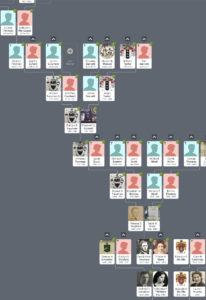
I also use a desktop genealogy software program called RootsMagic, which I find very useful for maintaining my primary, golden source family tree. The RootsMagic software sits offline so you don’t need an internet connection to work on your tree. In addition, with an internet connection, RootsMagic can sync its tree with your trees on other genealogy websites (Ancestry.com and FamilySearch.org). These features alone make the program worthwhile and it also has robust reporting features, which I can explain later, along with add-on applications for charting, geo-mapping, and narrative writing.
To summarize, growing your family tree consists of taking inputs from your immediate family, extrapolating and developing these inputs through DNA, Genealogy Websites and Historical research. At each step along the way, try to answer these six important questions: who, what, when, where, why and how to further develop each person, place or thing you come across in your research. By doing so, you’ll eventually timeline everyone and everything in your family tree, and establish provenance for research topics by following this process in an iterative manner. As you go down the path to growing your family tree, you’ll encounter a lot of frustration, but, will also discover family secrets and colorful characters along the way.
__________________________________________________________
Family History
Family Births
- On 1652-05-12, Mary CALHOUN is born in Corkagh, Ulster, Donegal, Ireland
- On 1685-05-12, Elizabeth HARRIS is born in Brunswick County, Virginia, United States of America
- On 1788-05-12, Janet Jennie MCCLURE is born in Boone, Kentucky, United States
- On 1844-05-12, Hardin WITCHER is born in place unknown
- On 1848-05-12, Benjamin Franklin DEBUSK is born in Lee, Virginia, USA
Family Deaths
- On 1237-05-12, King Olaf the Black GUDRODSON dies in Saint Patrick's Isle Saint German's Cathredral, Glenfaba, Isle of Man
- On 1603-05-12, Thomas WILKERSON dies in Halifax, St John the Baptist, Yorkshire, England
- On 1664-05-12, Grace WHEELER dies in Concord, Middlesex, Massachusetts, USA
- On 1712-05-12, Robert ANDERSON dies in New Kent County, Virginia, British Colonies
- On 1740-05-12, Sarah CHEW dies in Anne Arundel, Maryland, United States
- On 1835-05-12, Tabitha TWYMAN dies in place unknown
- On 1858-05-12, Jacob PRILLAMAN dies in Franklin County, Virginia, United States of America
- On 1923-05-12, Bessie V TWYMAN dies in Madison, Orange, Virginia, USA
| Paternal Line | Maternal Line | ||
|---|---|---|---|
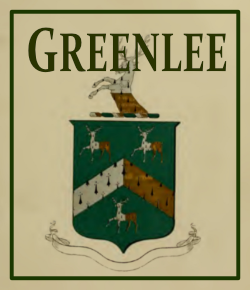 |
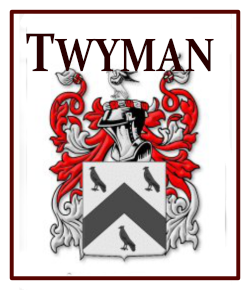 |
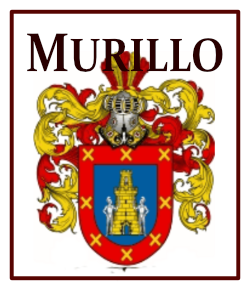 |
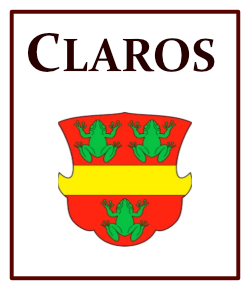 |
Categories
Genealogy
- Genealogy Portal
-
Search genealogical information related to the Greenlee, Murillo, Twyman and Claros families. Please contact us if you think we're related and can help each other in expanding our ancestry trees.
